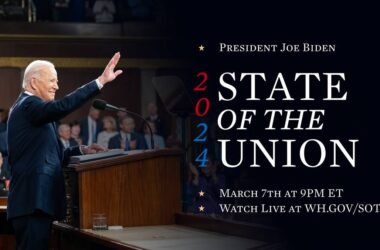Washington, DC–(ENEWSPF)–March 5, 2014. How do minimum wage policy increases affect enrollments and expenditures on means-tested public assistance programs? In this report we address this question for the case of the Supplemental Nutrition Assistance Program, or SNAP, formerly known as the food stamp program.
By definition, government spending on a means-tested program should decline as average earnings increase, insofar as benefit levels fall with increased earnings and insofar as the earnings increase makes some individuals ineligible for any benefits. Both of these conditions are satisfied in the case of the effect of minimum wages on SNAP benefits. SNAP benefits decline 30 cents for every $1 increase in family earnings and phase out entirely at about the federal poverty level. Low-wage workers are disproportionately enrolled in SNAP. A minimum wage increase that lifts many families out of poverty should therefore reduce public expenditure on this program.
But the relationship may be more complex. If a minimum wage increase reduces employment, thereby adding to the number of unemployed, the number of SNAP recipients could increase. SNAP recipients who are unemployed, disabled, or retired will not be affected by a minimum wage increase. Conversely, if many SNAP recipients have earnings that already bring them close to becoming ineligible for the program, a minimum wage increase may have a very small effect on SNAP expenditures. The quantitative effect of minimum wages on SNAP spending is not self-evident. It requires a causal analysis.
In an era of historically low real federal minimum wage rates, rising income inequality, job-market stagnation, and contentious debate about government deficit spending, the possibility that a higher minimum wage may lead to increased or reduced public spending has great relevance to the public and to policymakers. This report presents an initial empirical analysis of the effects of minimum wage policy on SNAP participation and expenditures. We do so by exploiting more than two decades of variation in binding state and federal minimum wage changes in an econometric framework. Our future research will examine the effects on SNAP further and apply an analogous framework to two other public assistance spending programs: the Earned Income Tax Credit and Medicaid.
According to the finding in this report a 10 percent increase in the minimum wage reduces SNAP enrollment by between 2.4 percent and 3.2 percent and reduces program expenditures by an estimated 1.9 percent. Taking into account each state’s 2014 minimum wage level, we apply these results to the legislative proposal put forward by Sen. Tom Harkin (D-IA) and Rep. George Miller (D-CA) to raise the federal minimum wage to $10.10 per hour. Our results imply that the effects of the Harkin-Miller proposal on wage increases would reduce SNAP enrollments by between 6.5 percent and 9.2 percent (3.3 million to 3.8 million persons). The total anticipated annual decrease in program expenditures is nearly $4.6 billion, or about 6 percent of current SNAP program expenditures.
Harkin-Miller proposes to index minimum wage levels in subsequent years to the consumer price index, or CPI. The minimum wage would then increase at the same rate as SNAP benefit and eligibility levels, which are also indexed to the CPI. Consequently, the savings over 10 years in 2014 dollars would be 10 times the one-year savings, for a total of approximately $46 billion.
Some of the reduction in SNAP program enrollment and expenditures would occur among workers making less than $10.10 per hour—those whose pay would be directly increased by the minimum wage law. Another part of the reduction would occur among workers currently earning between $10.10 and $11.50, who would also receive pay increases.
Although a large number of studies have examined the impact of minimum wage increases on earnings and employment, the impact of such minimum wage policies on public assistance enrollments and expenditures remains an under-explored subject in the economic literature. Only a few studies discuss the relation between the minimum wage and government transfer spending, much less attempt to identify the causal effect of one upon the other. Professors Marianne Paige, Joanne Spetz, and Jane Millar find positive effects of minimum wage increases on welfare caseloads; as they state, however, their results vary considerably with different sample periods and assumptions about state trends. Professors Marianne Bitler and Hilary Hoynes discuss the importance of SNAP as a safety net program, but they do not examine its relation to minimum wage policy. Research economist Sylvia Allegretto and her University of California at Berkeley colleagues show that low-wage workers in general, and fast-food workers in particular, are much more likely to be SNAP recipients than all workers.
Several studies have examined the relationship between the minimum wage and the Earned Income Tax Credit, or EITC. Professor David Neumark and William Wascher, a researcher at the Federal Reserve Board of Governors, find that a higher minimum wage increases EITC benefits for families in deep poverty, while reducing EITC benefits for some sub-groups. Professors David Lee and Emmanuel Saez argue that the minimum wage and EITC are complementary policies, not substitutes. The Congressional Budget Office, or CBO, argues that a minimum wage increase will not have a substantial effect on EITC spending, while Professor Jesse Rothstein examines whether the positive effect of the EITC on female labor supply has lowered wages. While these studies are of interest, the EITC is quite different from SNAP in having a substantial phase-in period in which EITC benefits increase, as well as a long phase-out period, with complete phase-out at an annual income of about $48,000 for a family of four, quite a bit above the reach of the minimum wage.
Research by Professor Arindrajit Dube on the causal effect of the minimum wage on family poverty represents the study most related to the one at hand. Dube finds that Harkin-Miller would raise about 4.6 million non-elderly Americans above the federal poverty level, or FPL. In contrast, when CBO uses a simple simulation method to address the same question, they find that Harkin-Miller would raise 900,000 people above FPL. The difference between these two estimates highlights the importance of undertaking a causal analysis. The methods used in this paper are in many respects similar to Dube’s. Moreover, since eligibility and benefit levels for programs such as SNAP and Medicaid are tied to the federal poverty level, Dube’s findings have direct implications for this study. Nonetheless, this report appears to be the first study to examine the effects of the minimum wage on SNAP. In future work, we plan to undertake similar analyses for the EITC and Medicaid.
The report proceeds as follows:
Section 1 provides background information on the federal minimum wage, state minimum wages, and the SNAP program.
Section 2 describes our methods and data.
Section 3 provides our main results, including a simulation of the effects of a Harkin-Miller minimum wage increase, and a state-by-state analysis.
Section 4 presents our conclusions.
Further details are provided in a series of appendices.
See also: Raising the Minimum Wage to $10.10 Would Cut Taxpayer Costs in Every State by Rachel West and Michael Reich
About the Report Authors:
Rachel West is a master of public policy candidate at the Goldman School of Public Policy, University of California at Berkeley. Michael Reich is professor of economics and director of the Institute for Research on Labor and Employment at the University of California at Berkeley.
Download the report: PDF
Download introduction & summary: PDF
Read it in your browser: Scribd
- Source: americanprogress.org








